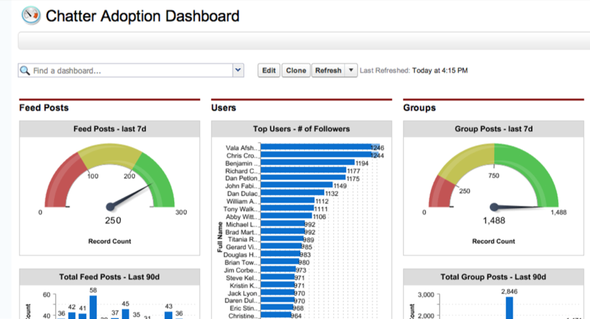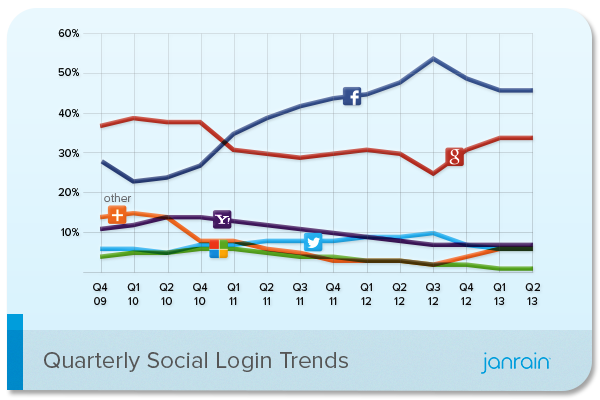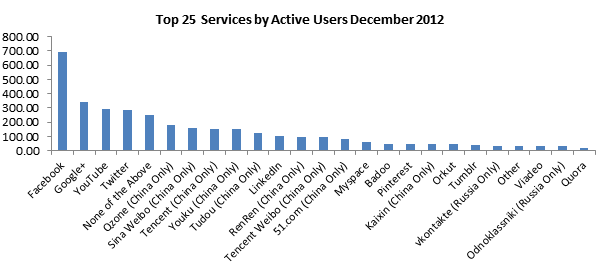2013
Autospeak-Straight Talk contains articles covering digital and social media marketing social communities and events marketing
The Pew Internet and American Life Project has released a study that looks at the usage of social networking by age group.
This isn’t the first time this kind of study has been done but this one has two things going for it. The first is that it is current. The second is that it comes from Pew, which we have found to be one of the truly unbiased research outfits in the market. Current and not being spun as some kind of PR is appealing to us.
First, a look at overall use of social networking by age.
This isn’t the first time this kind of study has been done but this one has two things going for it. The first is that it is current. The second is that it comes from Pew, which we have found to be one of the truly unbiased research outfits in the market. Current and not being spun as some kind of PR is appealing to us.
First, a look at overall use of social networking by age.
With 72% of overall Internet users using social networking sites it appears as if social media has truly arrived. But to whom? As one might guess, the younger the age the greater the saturation of social media use. But the spike in use of older age groups is interesting for sure. As marketers it’s critical to not assume that social media is just for the youngsters. That’s a mistake that no marketer should make these days.
Now let’s take a look at Twitter.
Â
Now let’s take a look at Twitter.
Â
Overall adoption seems low at 18% but considering the nature of Twitter, how it works and the ‘learning curve’ around it it may have a lower ceiling just by its very nature. Of course, with Twitter supposedly driving so much news these days that is a little scary since not everyone is using it to report and gather data so the potential for elitism is high. That gets compounded further with the bulk of Twitter users falling into the 18-29 age range.
Once again, is this data shocking? Not at all but it’s important to grasp who is using social networking so that it may be applied appropriately by marketers and others who are looking to reach specific groups with their message.
Were you surprised by these numbers? If so, what make you look twice? If not, what do you make of the findings?
By Frank Reed
DealerNet Services
Once again, is this data shocking? Not at all but it’s important to grasp who is using social networking so that it may be applied appropriately by marketers and others who are looking to reach specific groups with their message.
Were you surprised by these numbers? If so, what make you look twice? If not, what do you make of the findings?
By Frank Reed
DealerNet Services
What Is Google Plus And Why Should I Join Another Social Platform?
Tags:
(Posted on Aug 12, 2013 at 04:11PM )
 In the web industry, we need to spend a lot of time researching and keeping up with the constant change in order to provide relevant and sound advice to our customers.
In the web industry, we need to spend a lot of time researching and keeping up with the constant change in order to provide relevant and sound advice to our customers.Our customers are typically small to medium businesses who often don’t have the time to engage on any social media, but one of the questions I’m being increasingly asked is what is Google Plus?
We’ve all seen the gradual change within Google towards better quality content being a key search factor, along with the growing influence of social media on search, but to put it bluntly, Google Plus has the potential to permanently change the search landscape.
If you and your business aren't actively engaged on Google Plus, you are placing your business at risk!
A study by SearchMetrics earlier this year (you will need to register to download thestudy) showed that social signals such as “Likes†etc correlated very closely to search rankings, and that Google +1s more so than Facebook and Twitter. Correlation isn’t necessarily causation, but recent comments by Matt Cutts and a Google blogannouncing “in depth†articles show that Google Plus participation is going to be vital to gain and maintain rankings.
So, what is Google Plus and how do I use it?
If I had to summarise my thoughts on Google Plus, it would be that I came for the SEO benefits, but stayed for the huge amount of valuable and relevant of information that is shared, the standard of discussion and the willingness of most members to help out and contribute.
Google Plus is different to other social media, in my experience it is less prone to bad behaviour, and experienced members give freely of their time. Discussion topics can we wide ranging, I've been caught up in discussions on music, poetry, westies (as in dogs, via one of the very many "communities"), as well as my core interests of web design, digital marketing and social media.
While I’ve had a Google Plus profile for quite some time I’ve only been actively engaging for the last few months. So instead of me trying to explain it all, I’ll link to some excellent articles by Martin Shirvington, an outstanding authority on Google Plus amongst many other things and someone who will engage with you and help you make the most of this platform. (Make sure your first connection on G+ is Martin)
“If you think Google Plus is just another social site, you are in for a big surprise. What has been created is, put simply, a phenomenal tool for human communication, and much more. But it takes you to experience it, embrace it and ‘get it’ before this realisation really comes.â€- Martin ShirvingtonÂ
Martin Shervington
Marketing, Psychology & Google+ InsightsWhat is Google Plus? A Complete User Guide. (Videos and Blog)
Article resources (including additional videos)
- The Ultimate Guide to Google Plus Posts
- The Ultimate Guide to Google Circles
- The Ultimate Guide to Google Hangouts
- Complete Guide to Google Plus Pages for Brands and Businesses
- Complete Guide to Google Plus Communities
- Complete Guide to Google Local
- How to use Google Plus with Google Adwords
- Complete Guide to your YouTube Channel
- Google Authorship and Social SEO
- Search Engine Optimization (SEO), using Google Plus
BY CHRIS SUTTON
DealerNet Services
 What is the common thread in the following statistics? Thirty-six percent increase in brand awareness, 66% less time to bring products to market, 20% improvement in customer conversions, 15% increase in successful innovations and new ideas?
What is the common thread in the following statistics? Thirty-six percent increase in brand awareness, 66% less time to bring products to market, 20% improvement in customer conversions, 15% increase in successful innovations and new ideas?Answer: These are just some of the quantitative results attributed to becoming a social business. With dramatic benefits like these, why aren't all businesses social by now? The fact is, becoming a social business can be quite difficult, especially without a well-thought-out implementation plan.
Today, social software and tools have made cross-functional collaboration easier than ever before but cultural and philosophical barriers still get in the way. Even with all the well-demonstrated benefits of collaboration -- improved internal and external communications, better use of constrained budgets, better customer relationships and shorter meetings -- the concept of the social business introduces elements of threat, loss of control and risk. For managers accustomed to hierarchical control, fully embracing social business can mean moving outside their comfort zone.
[ Want a better bottom line? Read Social Collaboration's Big Payoff: Increased Sales. ]
There exists a digital divide in business. On one side of the divide are those who view technology as a distraction, something that must be closely monitored and controlled. On the other side are those who embrace the technology megatrends of social, mobile and cloud. To innovate and thrive in today's rapidly changing environment, businesses must become social and bridge this digital divide.
To that end, here is a seven-step checklist for becoming a successful social business -- a checklist that has worked well for us at Enterasys.
1. Define A Meaningful Purpose.
Start by understanding where you want to go. Make sure everyone's goals are aligned. Your company culture will play an enormous role in becoming a social business, so take the time to understand and steer your company's culture in the right direction. If your people are not comfortable, they'll drop into what Christine Comaford calls their critter state. Provide the right company environment and you can move them into their collaborative smart state.
Make sure everyone sees the benefits of a social business. It won't mean more work; it will mean less email, fewer interruptions, less guesswork, fewer meetings. It will make work life more innovative and more fun.
2. Simplify The User Experience.
Ensure the tools for social business are easy and fun. They will get used as long as they are simple and integrate well into the general work environment and daily routine. At Enterasys, we use Salesforce.com and most employees keep it open and available on their desktops. When Chatter became available as a social communication tool integrated with Salesforce, it was a natural fit that helped speed adoption.
Be sure to encourage the use of online and mobile tools such as Evernote, wikis and blogs for taking meeting notes. That way the notes can be posted, shared and even edited immediately. Include social handles in all tools and interactions to make their use as easy as possible. Today people tend to keep Tweetdeck open on their desktop or mobile device and use it almost as often as email. Some people have completely switched from email to Twitter.
Becoming a social business rarely requires redesigning the organization. In fact, social businesses tend to avoid frequent reorganizations. The social tools are the lubrication that keeps cross-departmental and cross-functional information flowing freely, reducing the separation between groups.
3 Designate A SOCIAL Executive Sponsor.
Gartner estimates that 80% of social business projects will not achieve their intended benefits due to inadequate leadership. The executive leader must be S.O.C.I.A.L. -- sincere, open, collaborative, interested, authentic and likeable. Find -- or create -- an executive sponsor who meets these criteria: You're Not a Social Business Leader If ______? (10 Hints).
In some companies, the CMO might be the executive sponsor. Or it might be the VP of services or the chief customer officer. In a small startup, it might even be the CEO. Consider whether your company needs a chief social officer. The key is to find the most likeable, collaborative individual who has a large-scale influence -- and by the way, that might not necessarily be an executive. Embracing collaboration throughout a company requires participation and support from senior leadership. You are not a social business if your CEO and her direct reports are not actively using social technologies to collaborate and engage.
4. Trust Your People!
You have hired only trustworthy people, so trust them. Don't overanalyze corporate social collaboration guidelines. When you're trying to accomplish something revolutionary, it's best not to have too many variables, or you'll end up with analysis paralysis. Constraining interaction can have even worse consequences. Make sure everyone understands the concepts of the digital footprint and digital citizenship. A little awareness of these concepts goes a long way. There is some risk to eliminating filters and barriers, but the benefits of open collaboration outweigh these risks.
One of our early lessons involved senior management using Chatter to talk about non-work related subjects, including topics that showcased their personalities and interests. We came to realize that this was important. By bolstering employees' personal brands, you help bolster their work.
5. Implement And Drive Engagement With Social Tools.
Make social adoption a team sport. Create social collaboration functional groups. Every group has innovation leaders; pull them in early and enlist their help in engaging others. Try gamification techniques. Rethink your processes to include social tools. It doesn't have to be perfect the first time. Social businesses are agile, able to learn from their mistakes and pivot quickly.
At Enterasys, we wanted to use Salesforce Chatter to champion collaboration and promote the work of others. Our CEO, Chris Crowell, decided that the most important thing he could do to advocate collaboration was to share sales wins via Chatter. Chris would specifically name the salesperson and the customer and provide details about our sales victories. The entire company knew when we won, and the sense of pride and unity helped instill a positive attitude. Growth starts with this mindset.
To keep building momentum, provide "Lunch & Learns" or better yet, hold Google Hangouts for training on social media and collaborative software. Interactively delve into topics like the latest in social media tools and the art of tweeting and share best practices.
Enterasys uses a number of innovative social business activities to drive implementation. We hold frequent social "jams" built around Google Hangout to roll out new social initiatives. Trivia contests, where the responses must be submitted via Twitter, have helped increase employee engagement. We post tips and best social media practices to a wiki, which everyone can add to and edit. We are introducing "Flashback Thursdays," where we re-post past photos and blogs to reinforce earlier training.
6. Measure Adoption And Recognize Achievements.
Provide as much real-time feedback as possible. Analyze connections. See where it's working and where it's not. As Peter Drucker said, "What's measured improves." Let everyone know when assessments are coming so no one is surprised.
During our implementation, we wanted to measure adoption in order to promote the early adopters. The tracing and measurement became a vehicle to identify who was embracing collaboration. It was important for us to set the tone and manage the grassroots movement through positive intervention. Here is an example of the Chatter reporting dashboard.

By Vala Afshar
DealerNet Services
Google+ Continues To Dominate LinkedIn and Twitter, Could catch up to Facebook
Tags:
(Posted on Jul 10, 2013 at 04:10PM )

You may not be using Google+, but your friends probably are.If they’re not hanging out and posting photos of cute puppies and sunsets, there’s a good chance they’re using Google+ to log in to various web sites — and
 increasingly, they’re also clicking the +1 button to share those sites. In fact, it’s the clear number two social network according to a variety of measurements.
A new study commissioned by Janrain shows that, of the people who use social networks to log in to other websites, almost half (46 percent) use Facebook. But Google+ is in a strong second place, with 34 percent of social logins. (Janrain makes tools to help web developers use social network logins on their sites.)

That bolsters the claim that Google+, despite its late start, is solidifying its position as the number 2 social network after Facebook.
In a distant third place: Yahoo, with just 7 percent of social logins; and Twitter, with 6 percent.
Google+ launched to a limited number of users in June, 2011, and more widely in September of that year. In the two years since then, it has zoomed past social networks that were years ahead and had hundreds of millions of users already: LinkedIn, Twitter, and a handful of Chinese social networks.
Google+ now has more than 500 million registered users and 343 million active users, according to an independent study by GlobalWebIndex from December, 2012.
Facebook is twice as big, claiming over a billion registered users, while GlobalWebIndex estimates Facebook has almost 700 million active

But Google+ is growing faster, according to some measurements. It’s holding steady on social logins, according to Janrain’s data, growing just a fraction of a percent in Q2 2013. (Facebook sharing also stayed at roughly the same level — see the graph above.)
But sharing on both networks is increasing rapidly — only it’s growing much faster on Google+. People who use Facebook are sharing 10 percent more each month, in aggregate, while Google+ shares (aka +1s) are growing by 19 percent per month, according to a recent estimate by Searchmetrics, which tracks social network data.
At that rate, Searchmetrics estimated, Google will surpass Facebook by May 2016, at which time its users will generate over 1,096 billion +1s per month (yes, more than a trillion) while Facebook users will generate just 849 billion shares per month.
However you look at it — registered users, active users, social logins, or shares — Google+ is a surprisingly serious second. And it may even be a contender for the #1 spot in a few years.
Now if I could only find some people to hang out with on Google+.
Dylan Tweney
CALENDAR
CATEGORIES
TAGS
TWITTER POSTS
CALENDAR
No IMGY selected.
- powered by
- One Big Broadcast
- creative by
- WebStager
© 2025 One Big Broadcast | All rights reserved


